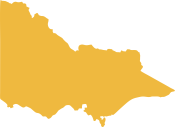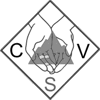Crag Stewards Victoria seeks to collaborate with the community to preserve and celebrate the cultural and environmental values of the places where we climb.
To do this, CSV aims to engage Victorian climbers, on a voluntary basis, to contribute to the operation of a stewardship program with five main branches of activity that are strongly linked and supportive of each other.
- Establish a network of stewards assigned to distinct crags to implement our program at that crag
- Assess and monitor the impact of climbing on cultural and environmental values using structured assessment tools
- Collaborate with Traditional Owners and Land Managers to implement protection, restoration and maintenance works
- Promote understanding and respect for traditional cultures and their heritage.
- Encourage best climbing practices with the climbing community via good communication and education.
Here’s some more information on the steps we are taking in each of these areas:
Steward Network
- Build a stewardship structure that supports the protection of popular and valuable climbing areas
- Assign stewards to crags based on their climbing experience, their connection to the crag and their ability to interact with the community
- Train stewards in our program operation, local cultural heritage and land management practices
- See this link for more information on our Stewardship Structure
Assessments
- Identify the cultural and environmental values and threats that are relevant to each climbing area, typically using park management plans and cultural heritage surveys, supported by information from local traditional owners and land managers.
- Assess where and to what degree climbing activity impacts, or has the potential to impact on these values
- Propose protective measures and remedies
- Regularly monitor impacts and changes in climbing activity
- Document this work in standardised formats
Implementing Works
- Establish protocols for the review and approval of works by Traditional Owners and Land Managers
- Plan and resource the agreed work
- Train volunteers
Promoting traditional cultures
- Engage in mutually beneficial relationships with traditional owners of each area
- Identify local cultural training opportunities
- Support cultural heritage survey work
- Collaborate on the presentation of cultural information on our website and locally at crags
- Support Reconciliation via our Reconciliation Action Plan
Best Climbing Practices
- Conduct outdoor climbing etiquette training at gyms and clubs
- Monitor and influence behaviour of climbers at crags
- Provide the climbing community with up-to-date information on cultural and environmental values at each crag and what they can do to support the protection of these (via website).
- Provide the climbing community with the opportunity to contribute via the reporting of damage or suggestion for improvement.


